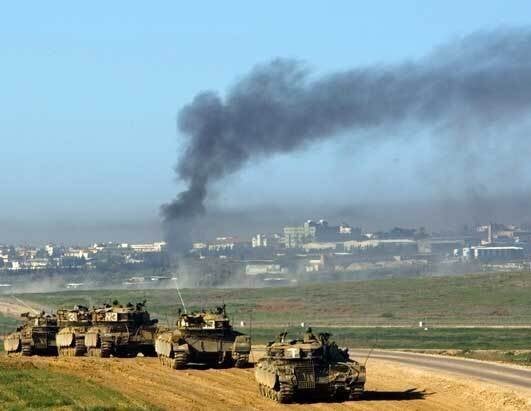
The M1 Abrams tanks are finally being added to the war machine in Afghanistan. It has been more than nine years since the allied forces bombed Afghanistan into occupation -- without relying much on the firepower of tanks. One cannot help thinking why they have felt the need for this additional firepower after all these years. They are not fighting a conventional enemy, as the skirmishes are fought in mud villages and poppy fields. An entire company of soldiers engage a few Taliban but face a hard time countering the threat.
One can get some answers from the increased pressure from the NATO allies and the tough questions that President Obama would face at the Lisbon summit. No one would make a mistake while assessing the problems in Afghanistan. Blunders, however, are expected to be made while devising new strategies for fighting the Taliban.
What would the tanks do in this scenario? One does not need to be a military expert to understand the consequences of this strategy. Taliban often engage the soldiers while deeply ensconced in mud huts, often using the civilian population as a shield. Even the most intense of fire exchanges cause less civilian casualties than a single blow of a tank that demolishes an entire hutment.
It is true that Americans are desperate to flush out the Taliban and their patience is running thin. It is also a fact that NATO casualties have quadrupled this year. It is, however, not a good idea to wipe out an entire village and further escalate the public backlash.
Marjah, Laskhar Gah and other areas of southern Afghanistan have an entirely different topography from the eastern provinces. They don't share an immediate border with Pakistan or Iran where the Taliban could find an easy refuge. They are devoid of any tough mountain ranges and passes where it is extremely difficult to flush out the troublemakers. Southern Afghanistan is mostly a big desert with nary a tree nor a bush growing on its barren soil. Most of the action is in the villages and the surrounding fields and barns.
This begs for a different approach, which should essentially involve the locals. There have been some efforts to engage the locals but they have mostly fallen through the cracks. Locals are too afraid to cooperate as the Taliban live amongst them. They cannot help NATO troops unless the latter increases its presence in the area and offers them a complete protection. One has yet to see any efforts in this direction as the villagers are left on their own devices -- and at the mercy of the Taliban -- after the raids.
Perhaps it's time for Obama and NATO members to change their combat strategies. They have nine years of experience to dwell on and come out with new plans. Right now, no one knows what the policy of the US is and whether it will talk with the Taliban. Obama needs to come up with some concrete answers as otherwise the situation looks utterly bleak.
